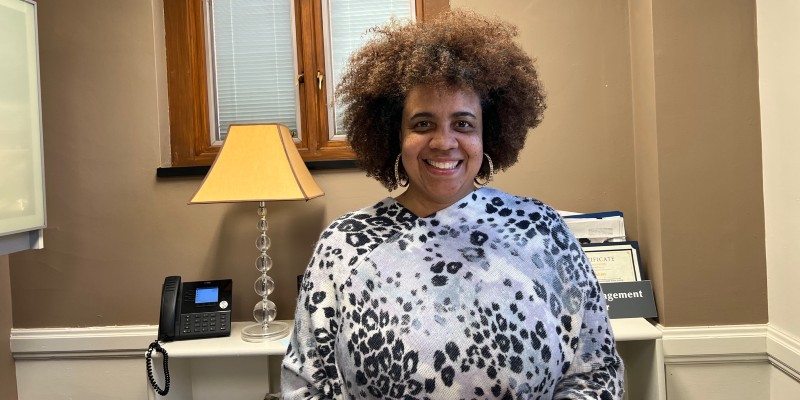At the end of 2021, the City of Champaign presented a comprehensive plan for addressing the issue of community gun violence. The Community Gun Violence Prevention Blueprint purposes $6.2 million of the $25 million granted to the city from the American Rescue Plan Act to addressing the root causes of gun violence, violence interruption, program evaluation, and support for partner organizations already doing this sort of work. Part of the blueprint includes a restructuring of the Office of Equity, Community and Human Rights, making it an entire city department. It was recently announced that Rachel Joy, Community Relations Manager and Compliance Officer for the city, will be assuming the role of Equity and Engagement Director-Chief Equity Officer, and will be heading up the new Equity and Engagement Department.
I spoke with Joy about her new role, and taking on the enormous task of tackling community violence.
On her previous work with human rights…
“I applied for a position here at the city [in 2016] for Community Relations Manager and Compliance officer, so working with human rights and also compliance related to purchasing and procurement with minority owned businesses and female owned businesses…I [previously] worked at a housing authority for eight years, worked in revitalization projects that looked at the compliance piece for having minorities and women work on construction sites…With advocacy, I’ve worked with domestic violence programs, homeless issues…I also did that from a consulting standpoint, providing technical assistance.
You’re not always told that there are those types of [human rights] jobs in municipalities, so that was appealing [when first applying to work for the City of Champaign].”
On the Community Gun Violence Prevention Blueprint…
“It was a team effort with [the Office of Equity, Community, and Human Rights] and the City Manager’s office, taking work that had been done in the office on a smaller scale, and also looking at best practices. We looked at Richmond [VA], we looked at Oakland, California…our goal was to put all of those pieces together and put it forth and say ‘here is a blueprint.’ The biggest piece is the evaluation piece, where we can say back to the community ‘this is working.’ It’s also supportive for the partner organizations…We wanted to remove that barrier so that people can roll their sleeves up, and do what they need to do, while an evaluator is able to come in and [look at the metrics].”
On her new role with the city…
“Now we’re an actual department, the Equity and Engagement Department, and we’ll have three divisions. One division will be Diversity, Equity, and Inclusion, which is the division I would’ve managed [in my previous role]; another is Community Outreach and Engagement, and the third is Community Safety and Justice, which will house all the work of the Blueprint. My role will be to direct everything and manage the supervisors of those divisions.”
On the challenge of creating an equitable community…
“When you start talking about equity, sometimes it’s a buzzword. [But it’s about] being able to dig deep and say ‘here are all the things that have been systemic, and that’s why we’re here today. The biggest challenge is just doing that work — we’re talking about history, and just trying to tackle that — and understanding that it’s not going to be overnight. People may say ‘nothing is happening.’ I think our role as a department will be to keep putting in front of people that we’re constantly making headway.
It’s very hopeful to have an entire department, and for the city to say ‘this isn’t an initiative or a position, it’s an entire department.’”
On moving forward, as the city deals with almost daily incidents of gun violence…
“We have to be able to be as coordinated as possible, and be able to get in front [of the issue], and I think that we can do that because of the way the Blueprint is designed. It is forward thinking. There are things that are directly talking about [violence] interruption, but also what happens after that. This department will also provide support to the overall city organization. What are things we need to tackle when it comes to equity in policies and practices? That’s going to automatically impact what’s going on with community gun violence, and the community will be a constant part of this. A big part of the Blueprint is working with [community] partners, helping them build capacity. A lot of them have been doing this with little to no resources, so how do we help sustain? It shouldn’t be the city saying ‘we’re going to take this on’ — that’s not our role — but how do we partner together? That level of collaboration is huge. It’s hopeful to see the city as a partner, and not in an adversarial way, or as a barrier.”
On taking on this new position…
“I love community, I love the opportunity to try something new, and I’m a ‘let’s do it’ type of person. It is huge, but I’m honored to do it”
Top photo by Julie McClure.








